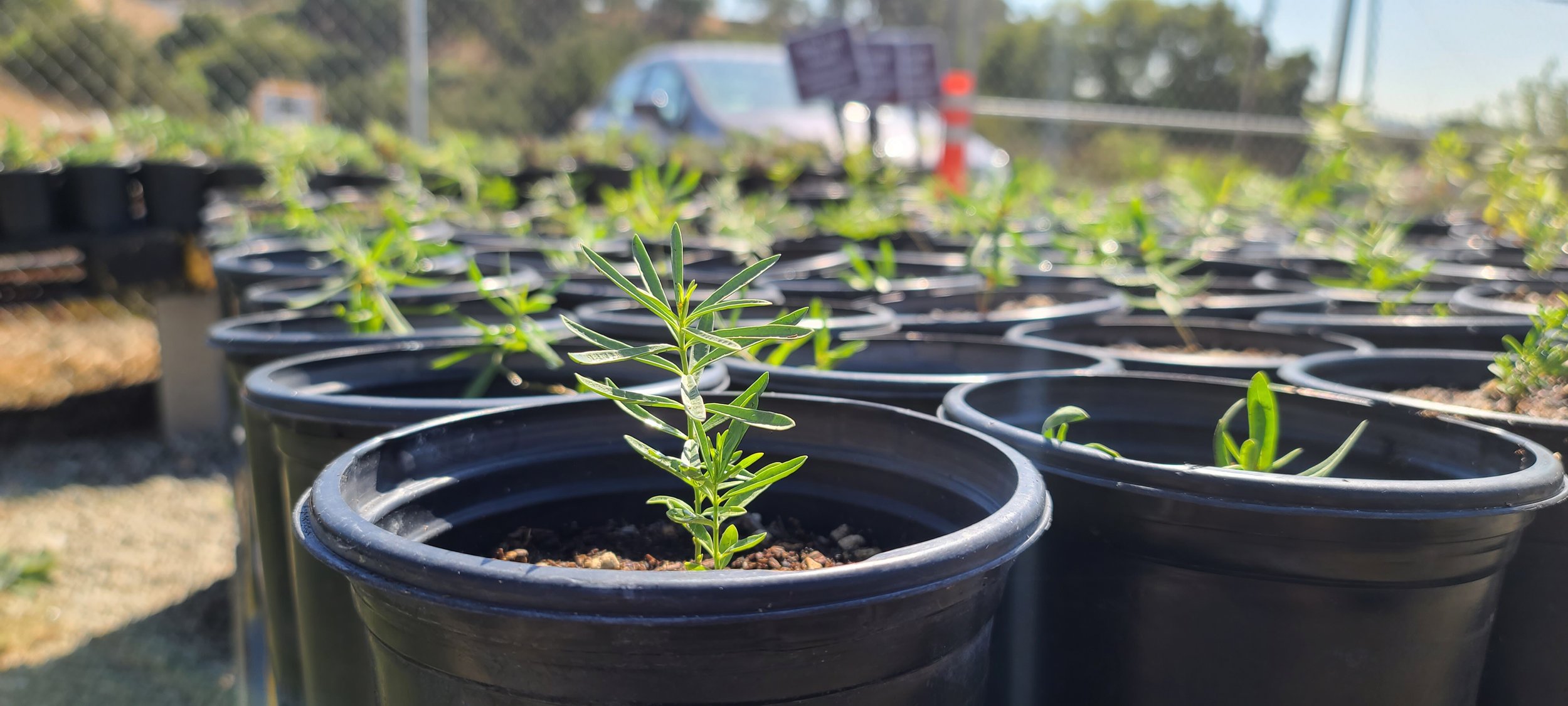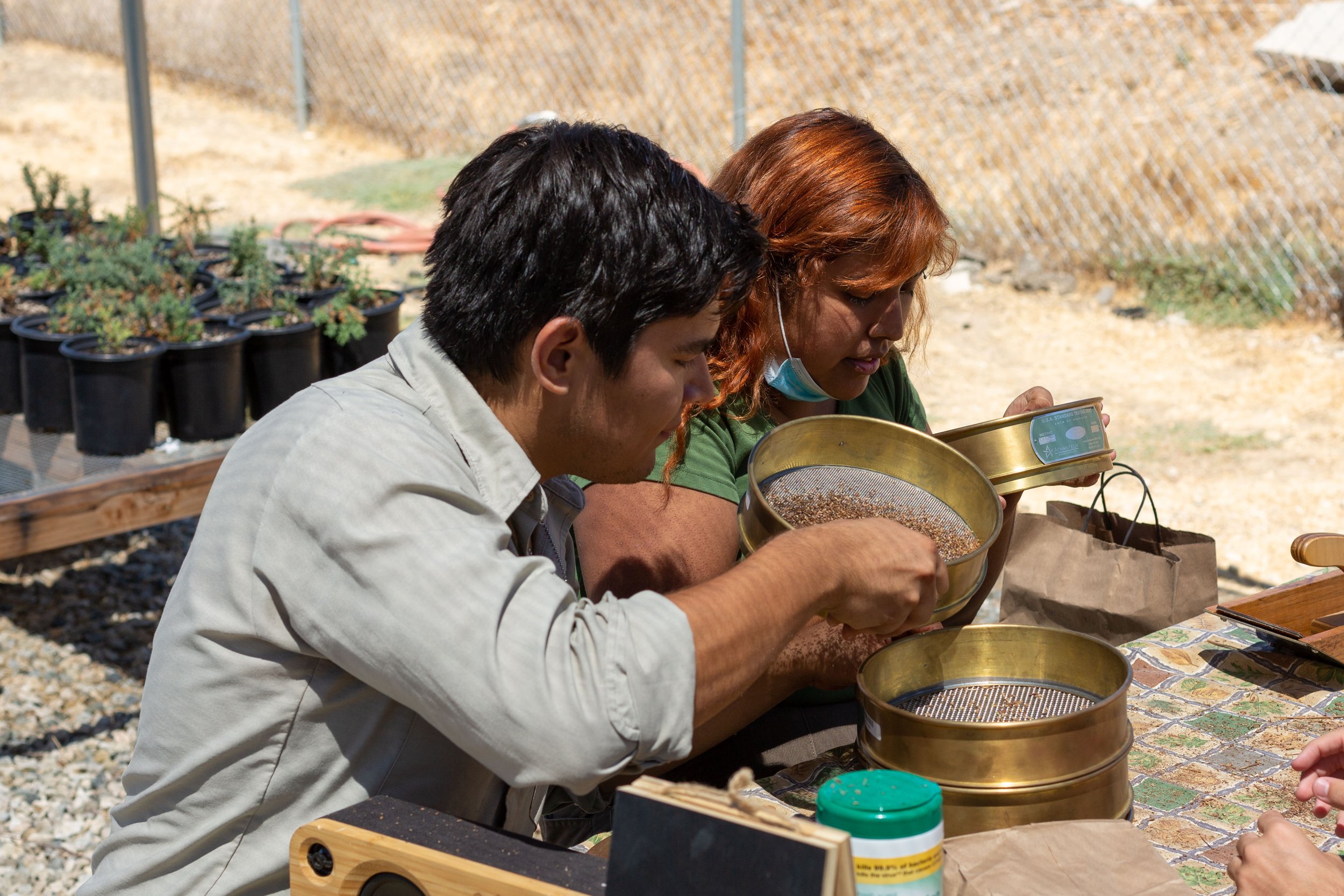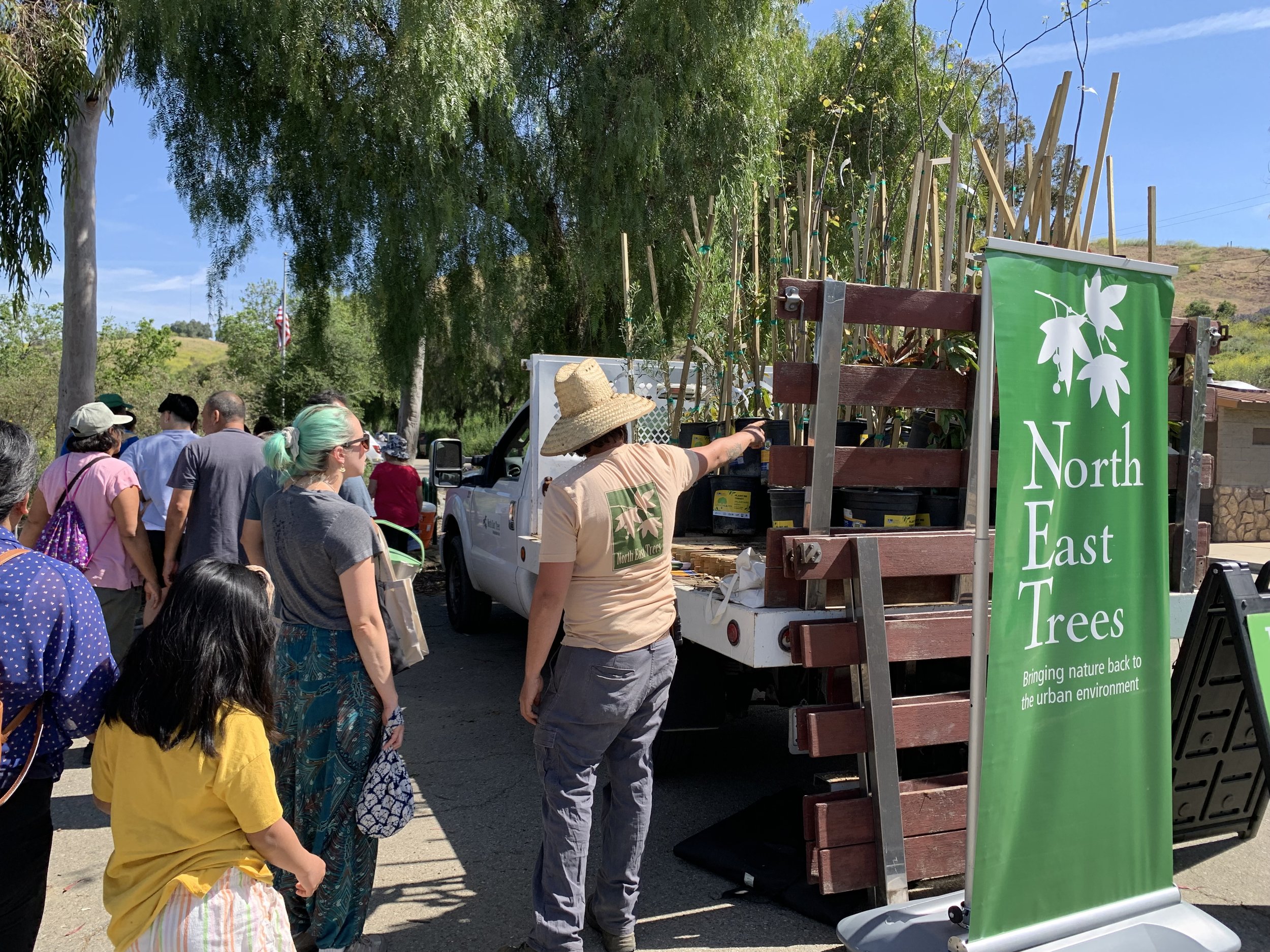
Incorporated in 1991, we are a non-profit that swiftly evolved into a significant influencer in urban greening in Los Angeles.
Our History
How We Started
Scott Wilson—a humble, optimistic, and very determined man—had a simple motto: “More trees are better.” Scott loved working with young people, he loved his Northeast Los Angeles community (ahhh, now our name is starting to make sense!), and he loved bringing nature back to the urban environment. His skills as a schoolteacher, landscape architect, and certified arborist all came together when Scott started North East Trees over thirty years ago.
Project Highlights
1989 - 1993
-
A grant from Century Cable enabled Scott Wilson and NET volunteers to install over a mile of drip irrigation to water Fiji Hill trees above Occidental College. This was NET's first-ever grant and significantly helped with tree maintenance at Fiji Hill.
-
During our early years, Fiji Hill was a showcase of our nonprofit's dedication to our community. Scott Wilson and his NET volunteers planted and maintained over 2,000 predominantly native trees on this hillside above Occidental College.
-
This project in Glendale focused on planting of sycamore trees to provide shade and reduce cooling costs for the school. Additionally, water-efficient landscaping and a vegetable garden were installed. Loreto Street Elementary School was our first schoolyard project, made possible with the help of LADWP, Earth Action of Occidental College, and Caltrans.
-
Founder Scott Wilson worked with first, second, and sixth-grade students to plant a temperate rainforest above the school grounds of Annandale Elementary School in Eagle Rock. The project also included vegetable and flower gardens, a garden terrace, a solar greenhouse, a windmill, a pond, and solar panels for clean energy. It was made possible by Annandale science teacher Bertha Martinez and the Gardening Angel Program at UCLA Extension.
-
Through a partnership with Eagle Rock High School, Scott Wilson founded our first-ever nursery. This nursery played a pivotal role in the early success of NET and helped provide stability when funding was challenging.
1994 - 1999
-
The Cool Schools Program, created by the Los Angeles Unified School District (LAUSD) and Los Angeles Department of Water and Power (LADWP), partnered with NET and three other nonprofit organizations to protect the environment while finding new innovative means to improve campus life. The program focused on tree plantings across 40+ LAUSD campuses.
The following list are Cool Schools engagements carried out by NET: Tenth Street Elementary, Buchanan Elementary, Dahlia Heights Elementary, El Oro Elementary, Elysian Heights Elementary, Micheltorena Elementary, Sierra Vista Elementary, Virgil Middle School, Rice Elementary, Glassell Park Elementary, Toland Elementary, Dorris Place Elementary, Luther Burbank Middle School, Florence Nightingale Middle School, Fernangeles Middle School, Esperanza Elementary, Ann Street Elementary, Eagle Rock Elementary
-
Through sponsorship from the State of California Transportation Commission, NET completed an urban forestry project that included the planting of 1,800 California native drought-tolerant trees. These trees were planted on public land adjacent to the Los Angeles River and the Arroyo Seco Flood Control Channels, specifically in the neighborhoods of Cypress Park and Highland Park.
-
The CTC Greenbelt spans from Heritage Square to the Southwest Museum below Mt. Washington. This greenbelt was supported by the Mt. Washington Access Beautification Committee to create a “cultural corridor” for the Mt. Washington and Northeast Los Angeles communities.
-
The Los Feliz Riverwalk is another one of NETs demonstration projects under the Los Angeles River Master Plan. Built in partnership with the Mountain Recreation and Conservation Authority (MRCA) and City of Los Angeles Recreation and Parks Department, this park boasts native landscaping, picnic areas, walking trails, riverrock walls, and a beautiful steel gate designed and fabricated by local artist Michael Amescua.
-
Egret Park is a pocket park located north of the Arroyo Seco confluence along the Los Angeles River. This was NET’s first LA River park which features meandering riverrock walls, benches, and native landscaping. This project was a part of Los Angeles County’s Los Angeles River Master Plan and was built in partnership with the Mountain Recreation and Conservation Authority (MRCA).
2000 - 2005
-
Designed and built by North East Trees, Bimini Slough Ecology Park features native vegetation and a stormwater bioswale. The ecology park serves as a model example of stormwater management best practices and was completed in partnership with the Bresee Foundation and Nisith Dhandha.
-
Nestled against the Los Angeles River in Elysian Valley, Oso Park features meandering river rock walls, native plants, and cut steel animals from local artist Michael Amescua. This natural heritage restoration project was made possible by the Mountain Recreation and Conservation Authority (MRCA).
-
Located near the Devil’s Gate Dam, this project involved the removal of a concrete section from the Arroyo Seco by the NET team- the first-ever removal of concrete out of the Los Angeles River to restore the natural riverbed. This project was made possible by Lynne Dwyer and Lewis MacAdams.
-
Water with Rocks is a metal gate created by artist Brett Goldstone and commissioned by NET. To commemorate the installation of this gate, NET hosted a native tree and shrub planting event with local students from the Kiwanis Club of Los Angeles, Key Club, and Circle K.
-
Wilson High School was NET’s first oak tree planting for LAUSD, addressing shade injustice at this North East Los Angeles school campus. This project included the planting of 40 trees, irrigation installation, and the planting of fruit trees from almost every continent.
2006 - 2011
-
The Oros Green Street Project was the first ever Green Street in Los Angeles. This project re-designed a residential street and park in Sunland to manage storm and urban runoff via soil filtration and vegetative bio-retention. It was a model of biologically centered best management practices (BMPs) and how they can be utilized to meet water quality objectives across Greater Los Angeles.
-
This best management practices (BMP) project was the installation of two large cisterns in Garvanza Park. The purpose was to capture rainwater and divert polluted runoff into the two large cisterns that were installed under the park. The water is cleaned and filtered utilizing natural infiltration processes, with water in one cistern soaking into the soil to replenish groundwater, while water in the second cistern is used to irrigate the park during dryer months.
-
In partnership with Baldwin Hills Conservancy, NET completed a project to formalize the neighborhood entrance to the Eastern Ridgeline of Kenneth Hahn along La Brea Avenue at Don Lorenzo Drive. This project includes entryway and access improvements, specifically staircase access, a bus stop, stormwater management improvements, and new native plantings.
-
The San Gabriel Corridor Master Plan was a consensus-based, stakeholder-driven master plan that identified priorities, provided guidance, and coordinated multiple goals of the many jurisdictions and stakeholders that share the San Gabriel River. The plan incorporated over 130 projects put forth by the 19 cities that lie along the river. NET played a huge role in creating and dispersing this master plan.
-
NET, in partnership with California Natural Resources Agency (CNRA), created approximately 3,000 feet of a multi-purpose trail for pedestrian, bicycle, and equestrian use, plus interpretive educational displays along the Los Angeles River.
2012 - 2017
-
Flat Top sits in the middle of Lincoln Heights, Los Angeles’ oldest suburb, and offers 360-degree views from Catalina Island to the San Gabriel Mountains. Flat Top was acquired by NET in 2014 from Los Angeles County and has been its primary caretaker since. To date, NET has stewarded Flat Top through invasive species removal, native tree plantings, and installation of low impact development (LID) stormwater best management practices (BMPs) such as bioswales and rain gardens.
-
The Ascott Hills Park Habitat Restoration was the greening of the existing (largely barren) park via carbon-sequestering shade trees, the installation of vegetated bioswales, and an infiltration system. Additionally, NET established our current Native Plant Nursery at Ascot Hills, which was supported by the National Park Service and Metabolic Studios.
-
Benjamin Franklin Elementary is a green schoolyard project that removed 45,000 square feet of asphalt and concrete, planted hundreds of native shade trees, flowers, and grasses, and installed nearly 9,000 square feet of rain gardens, berms, and new shade trees. Additionally, NET installed a roof water catchment system and an outdoor amphitheater. This project was funded by the California Natural Resources Agency (CNRA)
-
The Zev Yaroslovsky Greenway Trail was designed and built by NET and includes grading and construction of a natural bioswale, a rock-lined depression area that captures and naturally cleans stormwater runoff, and science/ecosystem-informed landscape design. The greenway helped restore the complex native riparian environment and create a natural habitat corridor for this section of the Los Angeles River.
-
The goal of this ongoing green connection project includes the planting of hundreds of trees and California native plants at Ramona Gardens, a Housing Authority of the City of Los Angeles public housing site. The new plants and other improvements will enhance the landscape’s beauty for residents and encourage safe paths of travel to local schools, parks, transportation centers, activity centers, and shopping areas. This project was made possible by the California Natural Resources Agency (CNRA).
2018 - 2023
-
In partnership with CalState LA and CalFire, NET planted 1,500 trees on CalState LA’s campus. This project supports the goals of the California Global Warming Solutions Act of 2006 (AB 32) by providing cost-effective environmental solutions to an underinvested community. NET planted a variety of California native trees, including coast live oak, toyon, black walnut, elderberry, laurel sumac, and hollyleaf cherry.
-
NET is proud to be a part of Watts Rising, a community-driven initiative with 15+ partner organizations that aims to create a greener, healthier Watts. Through NET involvement, we have employed 15 local youth from Watts to plant 1,500 street and residential trees along schools, streets, and parks to encourage green connections and reduce the urban heat island effect for Watts residents. This project is funded by the California Strategic Growth Council and the Housing Authority of California Los Angeles (HACLA).
-
In South Central LA, NET planted 100 trees at Pueblo del Rio and is working to plant an additional 665 - 800 trees along nearby streets creating safer and more shaded walking and cycling connections. Natural bioswales and rain gardens are being installed to capture rainwater and improve water quality, along with educational/interpretive signage. This urban greening project is made possible through generous funding from the California Natural Resources Agency (CNRA).
-
This project focused on restoring and improving the southwest section of Debs Park habitat by planting native species from the southern oak woodland, coastal sage scrub, and chaparral plant communities. NET planted 300 trees, and over 1,000 understory plants, installed bioswales/rain gardens, and retrofitted the existing irrigation system. Local youth were educated, trained, and employed for this habitat restoration.
-
NET, in collaboration with The Urban Studio and The Housing Authority of the City of Los Angeles (HACLA), employed local youth to teach their neighbors about energy efficiency and water conservation. The youth and NET design-build team transformed the grounds of the LA Wellness Station into a place for the community to enjoy. These transformations included the replacement of nearly 1,500 square feet of turf with native trees, plants, and fruit trees.
Be a part of our mission to create a greener Los Angeles
Your donation fuels our efforts to cultivate sustainable urban environments. Contribute now to make a tangible impact.


















